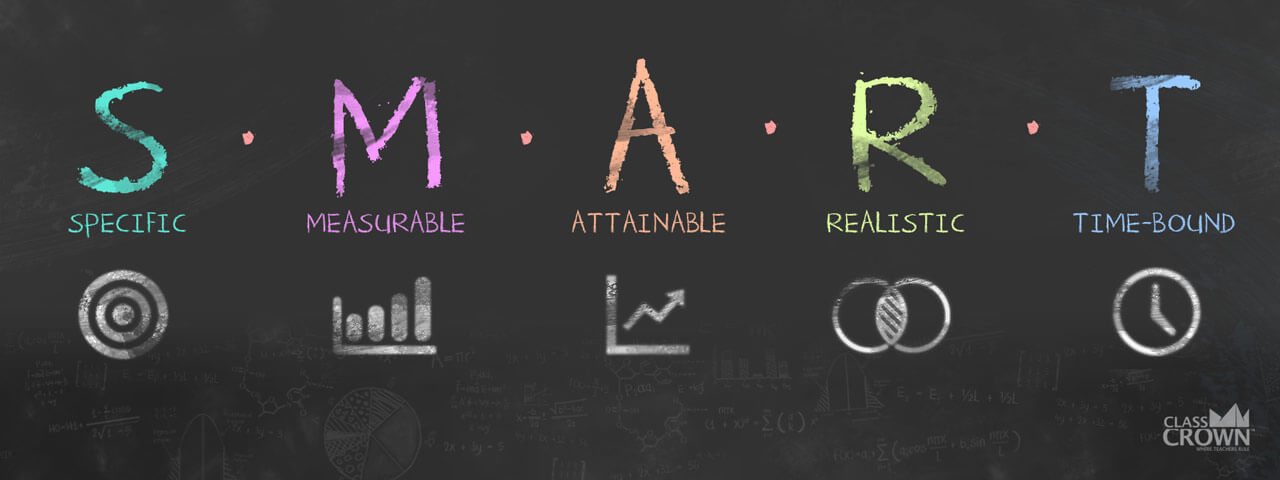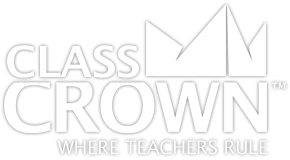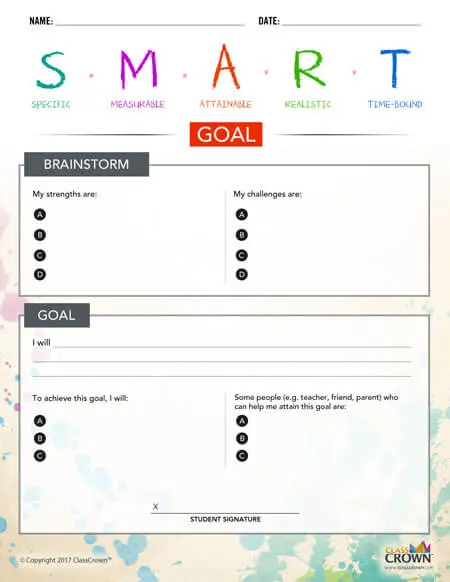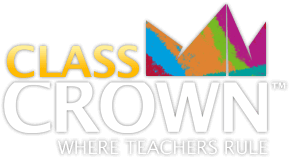
Motivation. Teachers know that the success or failure of a student depends mainly on motivation. Helping students set goals to do better on assignments, tests, etc. is one way to help them gain motivation and create a plan for improving their performance.
However, simply having students write vague goals such as, “I will do better on my next math test,” or “I will improve my chemistry grade this year,” will not be helpful. In order for a goal to be motivating it must have certain characteristics. One useful acronym for setting a good goal is SMART (Specific, Measurable, Attainable, Realistic, Time-bound). See our FREE SMART Goal Template for setting SMART Goals at the end of this post.
Poor Goal Example: I will improve my algebra grade by doing better on the tests.
SMART Goal Example: I will earn an 85% or better on my next algebra test, February 15.
Let’s examine each of these characteristics in more detail:
- Specific: A good goal will be very specific, so that once it is met, it will be very clear that it has been accomplished. For example, a basketball player saying he will improve his free throw rate is not very specific. However, if a basketball player says that he will improve his free throw rate by 20% over the course of the season, it is specific enough that he will know whether or not he has achieved his goal at the end of the season.
- Measurable: Using vague words like “improve” or “better” are not measurable. A good goal will be one that can be measured, with a specific benchmark set.
- Attainable: If a student regularly receives “D”s on his algebra test and struggles with math concepts, it is not wise to set a goal in which he is required to make 100% on his next test. Start with something that the student feels is attainable, given his strengths and challenges and the amount of time he has to improve his skills.
- Realistic: This is closely related to the “Attainable” feature of SMART goals, taking into account the student’s other responsibilities and time constraints. For example, maybe the student is quite capable of earning a 95% on her math test, but she knows she is going to be swamped with play practice, a huge history project, etc. at the same time. Perhaps simply earning an “A” is more realistic, given the constraints.
- Time-bound: In order for a goal to be worthwhile, it needs to have a starting and end point so that there is a clear time period in which the work necessary to accomplish the goal is to be done and so that there is an exact time to evaluate whether or not the goal has been met.
Now that we have a clear definition of what constitutes a good SMART goal, let’s think about some other things necessary to the process of creating SMART goals. If they are going to create attainable, realistic goals, for example, students need a chance to reflect on their past performance and honestly evaluate their strengths and weaknesses. Only then will they be able to discern how to measure their improvement and how quickly they think they will be able to achieve a certain benchmark.
It is also helpful to have students think about who they can rely on to help them either remain motivated while working on achieving their goal or help them sharpen the skills necessary to complete it. These people can include parents, teachers, friends, or others who are invested in their lives and care about their success. Have them be specific about how these people can help.
We are including a FREE SMART Goal template for your students to use in writing their goals. The best time to have students set a SMART goal is at the beginning of a new unit, so that they can start fresh and have a clear beginning and endpoint. Be sure to give them time to reflect on their past performance and think about who can help them achieve their goal. Have regular check points so they can assess whether or not they are doing what is required to meet their goal throughout the process of working toward it.
We have also found it very motivating to have a whole class goal and reward if most of your students meet their individual SMART goals.
Go set some SMART goals!


